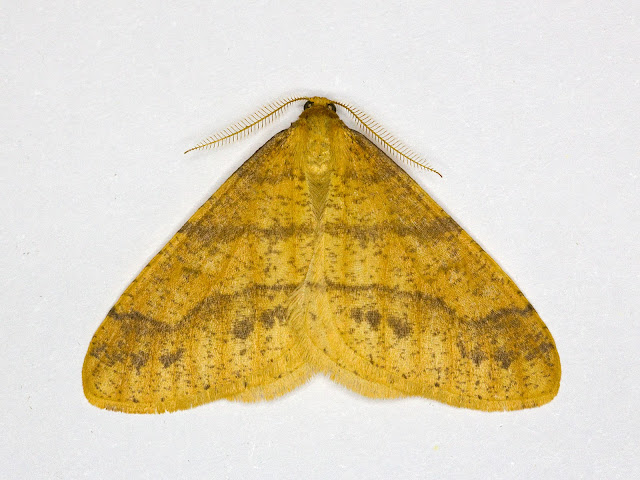It's November and it's getting colder but the books tell me that there will still be some moths flying as long as the temperature stays above zero. I just haven't managed to work out which nights they will be flying on.
On Sunday, I had what I thought was quite a successful night for early November, with twenty plus moths in the trap. Admittedly 7 of those where the Light Brown Apple Moths and 8 where Silver Ys but I also has three new moths in Black Rustic, Feathered Thorn and Scarce Umber.
 |
| Black Rustic - Aporophyla nigra (It's a bit worn but thy all count) |
 |
| Feathered Thorn - Colotois pennaria |
 |
| Scarce Umber - Agriopis aurantiaria |
Flushed with enthusiasm I put the trap out again last night. Having checked up on the moths still likely to be flying this late in the year, I was looking forward to finding a few more new species. Sadly it was not to be. All I found was a single Light Brown Apple Moth.
I really don't understand what makes a good mothing night. Comparing the nights of Sunday the 8th November and Tuesday the 10th, I have:-
Sunday 8th Tuesday 10th
Temp 8-13°C 10-13°C
Wind - gusting to 12-19Kmh 4-21Kmh
Humidity 91% 88%
Cloud cover 18% 19%
Pressure 1019mb 1025mb
Visibility Mist to Good Good
Moon 51% 29%
The only significant difference seems to be in the level of moon illumination. However, various sources suggest that, either less moths fly under a full moon illumination or UV lights are less effective during a full moon illumination. This is the reverse of what I am seeing.
The problem with this analysis is that I am only looking at my trap. It takes no account of the surrounding houses and street lights. Worst case, I could find that someone close by was running a Mercury Vapour lamp on Tuesday and had a catch of a few hundred. Still, its worth keeping a more detailed log of the weather on mothing nights and doing a bit more research.
The other moth of interest on Sunday night was my third Bloxworth Snout for the garden and my second of the weekend.
 |
| Bloxworth Snout - Hypena obsitalis 15th October 2020 |
 |
| Bloxworth Snout - Hypena obsitalis 8th November 2020 |
 |
| Bloxworth Snout - Hypena obsitalis 9th November 2020 |
 |
| Silver y - Autographa gamma |
 |
| Double-striped Pug - Gymnoscelis rufifasciata |
 |
| Red-line Quaker - Agrochola lota |
 |
| Clancy's Rustic - Platyperigea kadeni |
 |
| Barred Sallow - Xanthia aurago |
 |
| Orange Sallow - Xanthia citrago |
 |
| White-point - Mythimna albipuncta |
 |
| Angle Shades - Phlogophora meticulosa |
 |
| Barred Marble - Celypha striana |
 |
| Pale Mottled Willow - Paradrina clavpalpis (on Avocado) |
 |
| Light Brown Apple Tree Moth - Epiphyas postvittana |


No comments:
Post a Comment